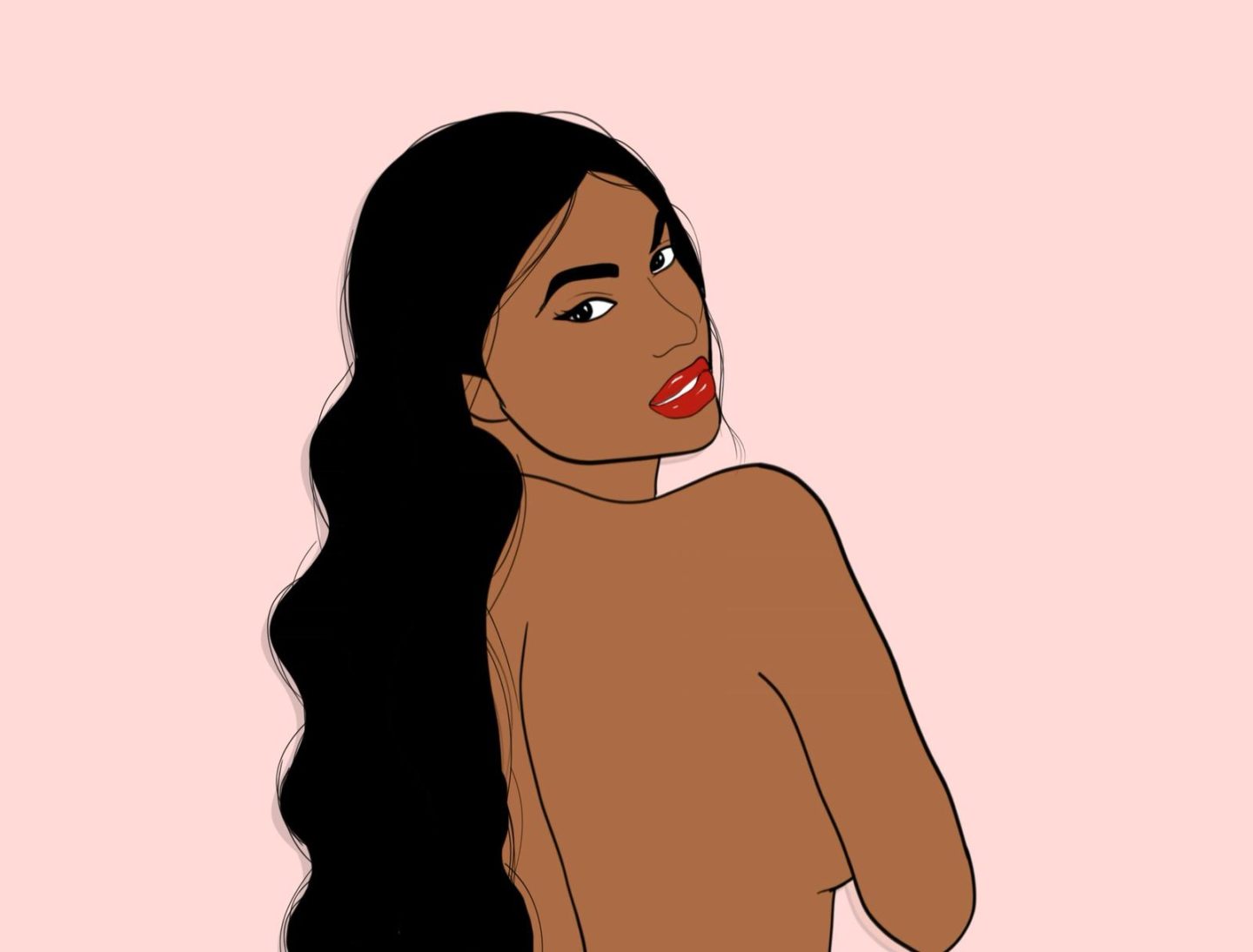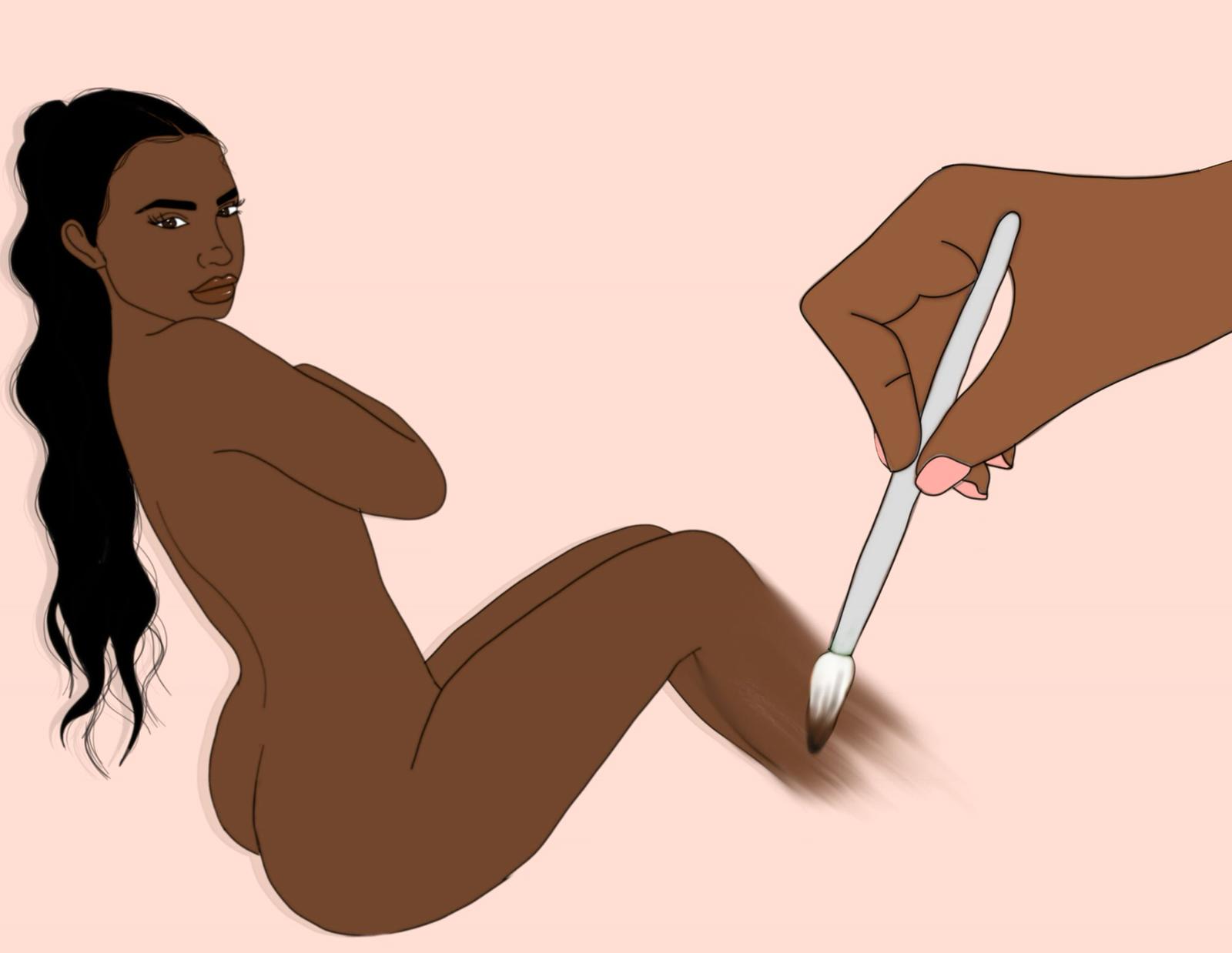‘Do women have to be naked to get into the Met. Museum? Less Than 5% of the Modern Art Sections are women, but 85% of the nudes are female’ – Guerrilla Girls (1989)
The first time I saw this statement I was shocked. I thought about the opportunities female artists have today that they didn’t just a few decades ago. And then thought about how much longer we have to go before total equality is reached in the art world. Today the representation of women in art remains a contentious issue for modern art, prime for controversy. But art depicting women is no more divisive than when the subject is nude.
I have experienced my fair share of disapproval from my use of female nudity in my artwork. In art classes, figurative paintings of male nudes never seemed to provoke the judgment that female bodies did. Which begs the question:
Why is there a double-standard concerning female nudity in art?
Nudity often features alongside art which explores ideals of beauty and heroism. Nudity in early art was the norm. In fact, I’ve never seen cave paintings of humans with clothing on. But cultural attitudes to gender roles dictate the difference between the way male and female sexuality is explored in these works. The archetypal mother figure features heavily wherever female nudity can be seen in art spanning back hundreds of years. Unique to female depictions of nudity is the degree to which female bodies are reduced to their reproductive function in pre-modern art. With nude paintings more likely to avoid censorship in the past when the painting was a breastfeeding mother instead of a woman having sex.
Venus of Willendorf, is best known for its exaggerated breasts, curvaceous body and buttocks. The absence of facial features makes the woman personally unidentifiable. The issue with much of female nudity in art is that the focus is on sexually exciting the observer rather than depicting the person behind the human body. So, it is common for female nudity in works of art to depict a feminine ideal, with a composite of ‘perfect’ features, rather than a real woman.
Male nudes are treated very differently. Historically, male nudes commonly featured heroes of mythology, leaders and Gods. These depictions symbolise proud, virile masculine power. But in the modern age, male nudity often goes unnoticed. The crucifixion of Christ is one of the most recognisable images in the world, met with respect and solemnity by Chrisitan followers. Its nudity goes unnoticed and unjudged. I have never heard of Michelango’s David being judged harshly for its nudity. I’d wager it is discussed less than the skill that went into creating it.
Female nudity in art is frequently argued as pornographic
Female nudity says something bold. It has power – something that is not traditionally expected of femininity. But female nudity is praised only when the subject is youthful. Old women’s bodies have been reviled and degraded within the art world for years. Especially in art from the Middle Ages where their bodies featured heavily in tableaus as witches. Male nudity models ideals for mankind. Female nudity acts as a barometer for society’s views on personal autonomy and modesty.
In 1991, Demi Moore posed nude while pregnant on the cover of Vanity Fair. The actress was claimed that her nude photoshoot was a celebration of pregnancy while her detractors labelled her nude body vulgar and distasteful. To many, this piece of art was an empowering demonstration of both self-love and the joy of motherhood encapsulated in a single image.
In December of 2018, Tumblr updated their guidelines which would ban all ‘adult content’. However, their policy which changed to say that content with ‘female-presenting nipples’ would result in the removal of the post was derided. Exemptions could be made only if the poster could prove that their image or video constituted as ‘art’ which is heavily debatable.
Who gets to decide when a woman’s body is a piece of art or pornography?

Many companies risk exploiting female sex-appeal to market even the most benevolent of causes. PETA activists have admitted that using nudity is the most “attention-grabbing” way to attract new members. PETA compared their activists to Lady Godiva, forgetting that the historic figure is remembered best for her nudity, rather than the message she was trying to draw attention to.
Nude art as educational
In 2014, Megumi Igarashi was arrested for breaking obscenity laws. She created sculptures and a kayak based on the shape of her own vulva in bright pop-art colours. Igarashi made international news when she was charged and continued to create yonic artwork anyway. Her work attempts to ‘demystify’ female genitalia, where in Japan they are censored in the media and entertainment. Igarashi has helped to empower young girls with the knowledge and confidence to understand their own bodies by defying these laws. She has shown that nudity is educational as well as entertaining. Her work brings attention to the oversexualised way in which society teaches young boys and girls to look at female bodies.
Cuban-American Ana Mendieta and Serbian-American Marina Abramović have also used their nude bodies as mediums of art. Transcending the expectation that the use of nudity is alone sexual. In Abramović’s performance piece, Rhythm 0, patrons of an art gallery abused the artist’s body and stripped her naked. Abramović stated in an interview, “what I learned was that … if you leave it up to the audience, they can kill you … I felt really violated”. Her work has helped to draw attention to the culture of public entitlement to nude female bodies in the art and entertainment we consume.
Mendieta’s work brings attention to climate change by inserting her nude body into nature photography. Her work explores ‘mother nature’ and her body is used to demonstrate both the strengths and fragilities of organic life.
Women have been leading the body positive art movement in the modern age
It is becoming more common and more exciting to see artists depicting nudes in a wide variety of body shapes, sizes and colours. People are celebrating artists like Frida Kahlo, whose work depicts intimate portrayals of the female experience. Kahlo’s unfiltered dedication to realism in her self-portraits has inspired artists to include facial and body hair on female bodies which is still taboo. And like Igarashi, this practice is reminding young women and girls that they can feel confident in the body they are in.
Modern female artists use nudity in their work to challenge the homogenous female beauty standard in our society. We are reclaiming and shifting the narrative that female bodies are commodities. And finding instead that there’s no better feeling than viewing art that both challenges and inspires you.
Find more feminism articles here >
Written by Chanté-Marie Young
Illustrated by Francesca Mariama

